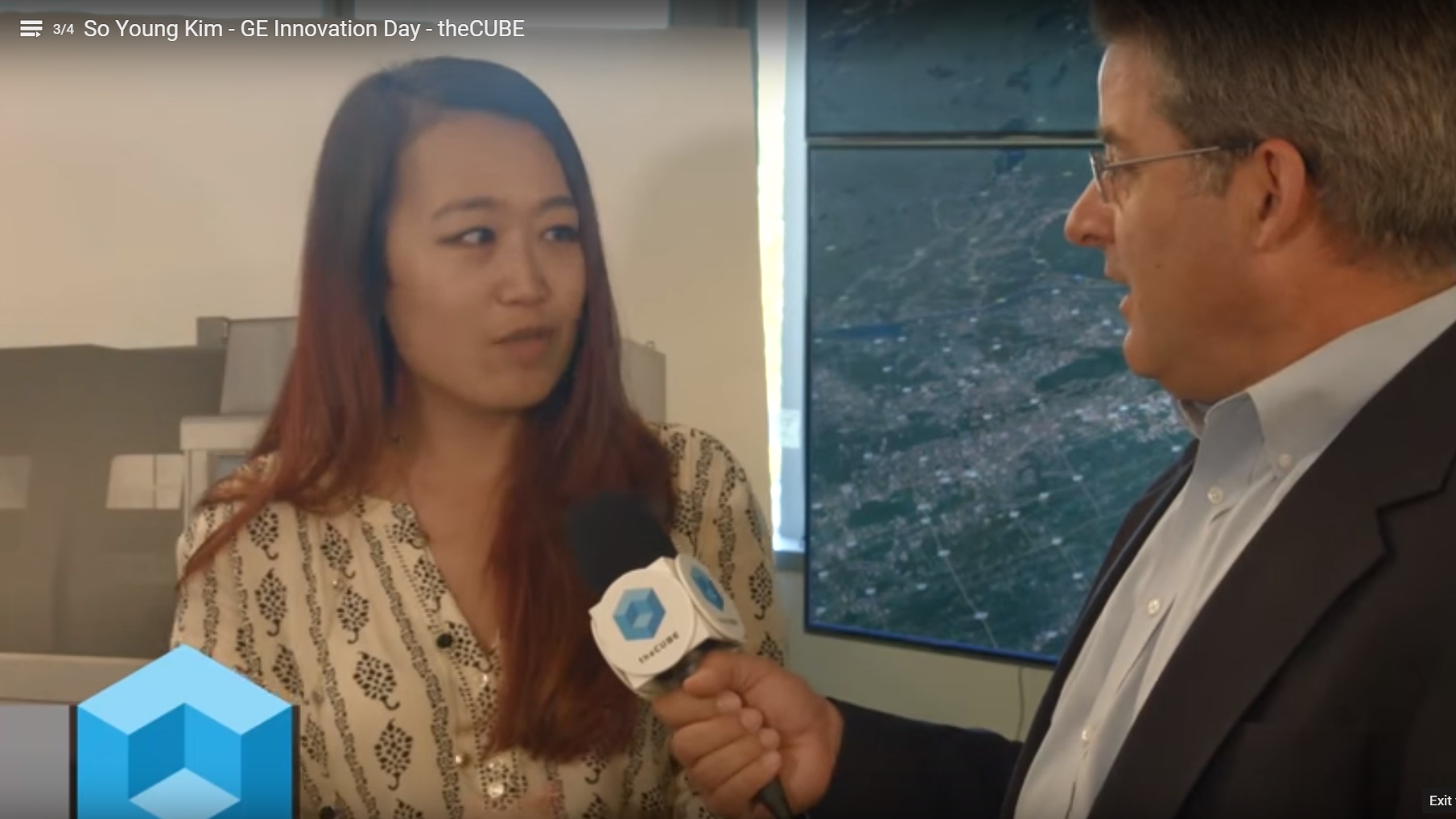 NEWS
NEWS
 NEWS
NEWS
 NEWS
NEWS
Human interaction is a crucial, though often neglected, component of the Internet of Things (IoT). So Young Kim, lead scientist of UX/human factors at GE Global Research, explained to Jeff Frick, cohost of theCUBE, from the SiliconANGLE Media team, during GE Innovation Day how GE is filling in the gaps as the Industrial Internet continues to grow at a breakneck pace.
Kim works in the prototyping lab. “We do a lot of proof of concept and prototype, [building] the next-generation concept to visualize how the new advanced technologies can be applicable within the industrial domain.”
“Our lab is a research lab …. we’re focusing more on the user experience, human system interactions, mobile, collaboration side of it,” she explained.
Their research helps companies ensure their technology is user-friendly and designed to minimize human error. “Humans are always there, whether it’s the one actually pushing the button or …. just getting the data, there is always a human in the loop,”Kim said. Her goal is to make humans “the strong point in the link.”
One innovation the GE lab uses in its research is the concept of “digital twins,” which is a digital model of a physical system.
“So, say you have a power plant. You have a gas-driven steam turbine as a physical system, but they wear and tear as they are being used,” Kim said. “So the optimized performance of the power plant is going to be different as they are getting older … you are going to create a model, a digital model of this physical system.”
This physics- and data-based model can process data coming out of the physical system and apply it to the digital model. The model then can identify how to optimize performance “and then inform the operators or the business guys to understand how best I can operate my plant.”
On the UX team, that means creating digital models of employees and workers. “From our side, we’ve been calling it a digital worker, and the twin of a digital worker.”
This helps the research teams design user-friendly software and machinery and can even help novice workers as they train on new equipment.
Watch the full interview below, and be sure to check out more of SiliconANGLE and theCUBE’s coverage of GE Innovation Day 2015.
Support our mission to keep content open and free by engaging with theCUBE community. Join theCUBE’s Alumni Trust Network, where technology leaders connect, share intelligence and create opportunities.
Founded by tech visionaries John Furrier and Dave Vellante, SiliconANGLE Media has built a dynamic ecosystem of industry-leading digital media brands that reach 15+ million elite tech professionals. Our new proprietary theCUBE AI Video Cloud is breaking ground in audience interaction, leveraging theCUBEai.com neural network to help technology companies make data-driven decisions and stay at the forefront of industry conversations.